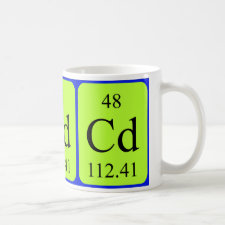
Authors: Wu JB, Zang SY, Yi YL
Article Title: Sol-gel derived ion imprinted thiocyanato-functionalized silica gel as selective adsorbent of cadmium(II).
Publication date: 2013
Journal: Journal of Sol-Gel Science and Technology
Volume: 66
Issue: (3)
Page numbers: 434-442.
DOI: 10.1007/s10971-013-3029-2
Abstract: A Cd(II)-imprinted thiocyanato-functionalized silica gel adsorbent with high adsorption capacity was prepared by surface imprinting technique combined with sol-gel process for the selective adsorption of Cd(II) ion in aqueous solution, and was characterized by Fourier-transform infrared spectroscopy, nitrogen gas sorption and thermogravimetric analysis. The influences of different conditions (such as the pH of solutions, the contact time and the initial concentrations of Cd(II) ions) on the adsorption capacity of Cd(II) were investigated. The optimum pH of adsorption was in the range of 4-8.5. The adsorption equilibrium could be reached in 20 min. The relatively selectivity coefficients of the imprinted silica were higher than those of the non-imprinted adsorbents. HoGÇÖs pseudo-second-order model well described the kinetics of the adsorption reaction. The adsorption process of metals followed Redlich-Peterson isotherm model, and the experimental value of maximum adsorption capacity for Cd(II) was 72.8 mg g-1. The positive value of Δ H o suggested endothermic nature of Cd(II) adsorption on the imprinted silica adsorbent. Increase in entropy of adsorption reaction was shown by the positive value of Δ S o and the negative value of Δ G o indicating that the adsorption was spontaneous in nature
Template and target information: cadmium ion, Cd(II)
Author keywords: Ion imprinted, sol-gel, Silica gel functionalization, Cd(II) Adsorption



Join the Society for Molecular Imprinting

New items RSS feed
Sign-up for e-mail updates:
Choose between receiving an occasional newsletter or more frequent e-mail alerts.
Click here to go to the sign-up page.
Is your name elemental or peptidic? Enter your name and find out by clicking either of the buttons below!
Other products you may like:
 MIPdatabase
MIPdatabase









